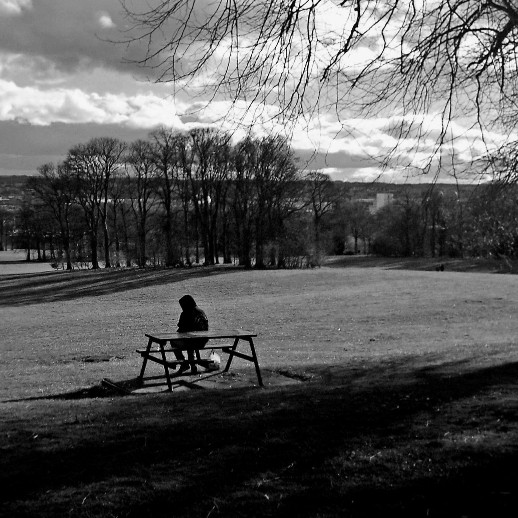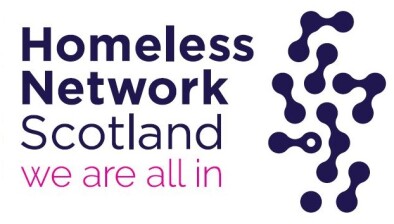Homeless Action Scotland: The creation of youth homelessness
Youth homelessness is almost invisible to the public therefore only true radical change can bring it to an end for good, writes Homeless Action Scotland.


Youth homelessness isn’t always visible in a way that captures the public imagination. It’s not common to see young people sleeping rough on the streets of towns and cities, although there are definitely those that do. Youth homelessness is almost invisible – and that makes it far too easy to ignore.
To understand the rise in youth homelessness, we need to look back at the political and policy environment that gave cause to it. In the 1980s, long before Scotland became a devolved nation, the Conservative UK government began a raft of political programmes that would fray the edges, then cut ragged holes in the longstanding safety nets of social security, highlighting personal responsibility rather than state intervention.
The UK wasn’t alone in this. The move to a de-industrialised, service-industry and market-driven approach to economic and social policy could be seen across the western world. Interest rates rocketed. Inflation and the cost of living rose at an equally sharp rate. Economic boom times led to inevitable bust in a cycle that saw the poverty gap widen at each turn. Trades union power and influence started to be chipped away, bit by bit. Those already struggling economically found themselves in crisis. Towns and cities that relied on manufacturing and heavy industries suffered most sharply. As the steelworks, shipyards, coal mines, dockyards and factories across the country closed their doors, entire communities found themselves without work. Mass unemployment went hand in hand with mass homelessness at a scale not seen in peacetime.
Along with economic changes, social changes also hit hard. The mass building of council housing that had begun in the late 1940s and peaked in the 1970s came to a grinding halt. A shift to home-ownership was boosted by the “Right to Buy” – where council or RSL tenants who had maintained a tenancy over a set period of time were offered the opportunity to buy their homes at a deeply discounted rate. Councils were prohibited from using the proceeds of council house sales to build new housing and so the availability of socially rented stock into which people could move dwindled. Free from regulation, and with greater availability of sub-prime “buy-to-let” mortgages, private landlords started to extend their property portfolios and fill the growing need for places to live: the concept of housing moved from “home” to “investment”.
The system of social security, which hadn’t been much changed since the introduction of National Insurance in 1948, also began to be altered. Social security payments, such as Unemployment Benefit, were no longer to be automatically index-linked and increased elements of conditionality were introduced. Commonly targeted at young people, and tied with training schemes, such as the Youth Opportunities Scheme (YOPS), Youth Training Scheme (YTS) and Employment Training (ET -which was colloquially known as “Extra Tenner”) non-compliance would lead to unemployment benefits being withdrawn. (In many respects the greatest change in welfare conditionality affecting young people came with the New Labour Government of 1997 and the adoption of a US-style “Welfare to Work” approach, but arguably its ideological blueprints were set out in the 1980s.)
Other subtle changes included students no longer being eligible for housing benefit for student housing, as well as having no access to unemployment benefit during the three-month summer break. This meant that students, regardless of how settled they were in their accommodation or connected to their new home towns, were often given no choice but to return to their family homes: homes which were not always safe or conflict-free to return to.
As unemployment rose and industries closed down the use of illicit drugs, particularly heroin, grew to endemic scale. Although heroin use was not unheard of before the 1980s, its use was not widespread across the UK. It was mainly considered a “London problem,” and was the drug of choice for older, more affluent people, rock stars and arty types on the fringes of society. However, heroin became both cheaper and more easily available in the early 1980s due to a change in the supply route of the drug, with Pakistan and Iran becoming the main distribution routes for trafficking drugs grown in bordering Afghanistan.
The heroin from Afghanistan was a different quality product to that produced in the previously dominant ‘Golden Triangle’ (Thailand, Laos and Myanmar) which was a far more processed, and therefore more expensive, end product. Additionally, heroin from Afghanistan was primarily smoked rather than injected as it was not easily soluble without the addition of a solvent such as acetic acid. A common myth of the time was that smoking heroin did not lead to addiction. Sadly, this was only a myth. Studies from the time showed that from the first instance of “casually” smoking heroin to becoming a daily intravenous heroin user took no longer than six months. By the mid-1980s the cost of heroin was approximately half that of the 1960s. It was increasingly an “affordable” drug.
Policy around drug use also changed its tone. Whereas in the 1960s and 1970s addiction was primarily seen as a medical symptom with a medical solution, in the 1980s language around addiction framed it as a “lifestyle choice” and moral issue. Addiction was looked upon as a weakness of will, just as unemployment was viewed as laziness and an inability to “get on your bike” to seek work. Rather than being seen as citizens in society to whom we all owe a duty to support, people with addictions and the unemployed were popularly viewed through the prism of the press as having brought it on themselves and of being outside of families and communities.
Abstinence was offered as the only solution. Figures as diverse as Nancy Reagan and Zammo from BBC children’s programme Grange Hill became the faces of the “just say no” campaign, perhaps not taking into consideration that those most likely to encounter addiction were not necessarily interested in the spouses of US presidents or the fictional schoolchildren of a TV comprehensive school. The prescribing of methadone as a heroin substitute also became more common as a means for people to manage their addiction while waiting for a treatment programme to become available.
Methadone meets the cravings of addiction, but provides none of the “high.” The legal prescribing of heroin’s respectable sibling, clinical diamorphine, was dismissed as being little more than the state acting as a “replacement dealer.” Policy was therefore muddled by morality; addiction (in this case to methadone) itself not the problem so as long as no-one derives any pleasure from it.
At the same time that heroin addiction became widespread and widely featured in the media, rough sleeping became visible. Doorways and benches in cities across the country became places for people in extreme poverty to sleep. The news at the time reported on “homeless shanty-towns” that appeared under bridges and on derelict land across the UK. Politicians were filmed stepping over sleeping people on the pavements outside London theatres and opera houses. For the first time, young people made up significant numbers of those sleeping on the streets: with no work – or prospect of work – and limited support from benefits, young people fell through the gaps.
That there were no specialist youth homelessness services outside of London easily available to provide help and advice didn’t help with preventing young people from sleeping rough. Arguably, it is from the media representation of the crisis in the 1980s that the still popular image of homelessness was shaped: addicted, unemployed and living on the streets.
Since devolution, Scotland has made huge steps towards addressing some of the factors that lead to homelessness. One of the first significant pieces of equalities work set in motion by the newly formed Scottish Parliament in 1999 was to set the target that by 2003 no one had to sleep rough in Scotland. Through several different homelessness and housing acts, legislation in Scotland affords people of all ages a right to settled accommodation. However, a right to something doesn’t always lead to it happening.
Young people are specifically hamstrung by inequality. They are subject to benefits restrictions and conditionality, low pay if in work, limited state support paying for housing between the ages of 18 and 25 (Shared Accommodation Rate) and no automatic support at all if under 18, with only very specific exceptions. The Scottish housing and homelessness legislation affords them rights, but the reserved powers of the UK government to set benefits rates, thresholds and sanctions make some of those rights unworkable. A young person in Scotland can be given a tenancy agreement at the age of 16 but can’t automatically receive housing benefit or Universal Credit to make up any shortfall in the rent. Unless they are a parent or have been forced from their home and made homeless they simply aren’t eligible for this kind of support.
Despite not needing to pay tuition fees if choosing to study in Scotland, Scottish students are still not given subsistence grants. Instead, they can take out repayable student loans and are encouraged to work as well as study full time. Some may qualify for an additional discretionary bursary, but even paid at its highest rate it is unlikely to meet the basic costs of housing. Higher education now has the highest levels of dropout rates of all time. Unemployment rates for young people remain higher than for those over 25. Homeless young people still make up over 25% of all homeless presentations.
The most common form of homelessness for young people is hidden, its true number masked and uncounted in official statistics. The majority of young people who become homeless aren’t addicted to drugs, although the experience of homelessness itself can make addiction more likely. The most common reasons given for young people becoming homeless are relationship-based, through broken relationships with family or partners. Young people are more likely to make informal arrangements with friends to sleep on their floor or sofa than to sleep rough.
They will put themselves at risk of harm and exploitation, “choosing” to form unhealthy or transient relationships rather than be roofless. They will put up with violence and abuse rather than go onto the streets. They become disenfranchised and disconnected from friends, family, education and services. They won’t present to housing offices for homelessness assessments as either they don’t believe they are homeless if not sleeping rough or that there is very little that can be done for them as they can’t afford the costs of housing.
Unlike in the 1980s, youth homelessness organisations and services now exist. Help is available and can make homeless young people’s lives easier. But even today the focus still remains on the individual and not on societal change to end homelessness. Young people are encouraged to “make better choices” even where few real choices are available to them. Trauma-informed approaches are promoted, but less is done to prevent trauma occurring in the first place.
Despite a right to housing – and a trialling of a new Housing First for Young People model – most homeless young people still need to prove that they are “housing ready” before they are permitted to rent social housing. Young people who are homeless today are the children and grandchildren of those whose conception of homelessness was formed in the 1980s. So too are the policymakers. It shows.
That continuing disproportionately high levels of youth homelessness still persist today is due to the lasting effect of ideologically driven policies made 40 years ago. Decades later, we have yet to fully embrace the idea of mending all the holes in the social security nets. Despite great efforts, hard work and good will from people working with homeless young people, unless truly radical change takes place – change in both policy and mind-set- we will only ever manage to make small inroads into ending youth homelessness for good.
 Homeless Action Scotland is a national membership organisation for homelessness in Scotland
Homeless Action Scotland is a national membership organisation for homelessness in Scotland







